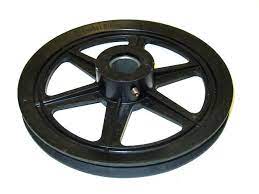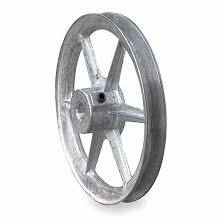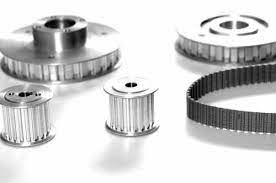Product Description
Product Description
CHARMILLES WIRE CUT EDM DRIVE COMPLETE PULLEY 104466590 446.659.0
| Item | Size | Original Number |
| C590 | OD84/80XH56/34 mm | 104466590 446.659.0 |
1.Large quantity in store available
2.High quality and reasonable price,faster delivery
Machine Type :
Charmilles FI 190, Charmilles FI 230 F, Charmilles FI 240,Charmilles FI 240 CC, Charmilles FI 240 CCS, Charmilles FI 240 SL,
Charmilles FI 240 SLP, Charmilles FI 290, Charmilles FI 290 P,Charmilles FI 300,Charmilles FI 310, Charmilles FI 330 F,
Charmilles FI 390, Charmilles FI 440, Charmilles FI 440 CC,Charmilles FI 440 CCS,Charmilles FI 440 SL, Charmilles FI 440 SLP,
Charmilles FI 500, Charmilles FI 510, Charmilles FI 640 CC,Charmilles FI 640 CCS, Charmilles FI 690
Company Profile
HangZhou CHINAMFG CHINAMFG Precision Mould Co., Ltd was founded in 2571 and is located in Chang’an Town HangZhou City, ZheJiang Province which is the biggest and famous Mould Town . The location is excellent and the transportation is convenient..The company is mainly engaged in the production and sales of E D M spare parts , Non-standard custom hardware and E D M Filters products .Meanwhile , we also provide E D M wires ,E D M Ion exchange resin, E D M Molybdenum wire so on . These products are used in all slow, medium and fast wire cutting E D M machines , and supply “one-stop” service.
Our company knows that the development of the company depends on the innovation and quality of the products. , so our products have strict quality control from the procurement of raw materials to the sale of finished products and management of the environment. Therefore, we have obtained I S O 9 0 0 1 and I S O 1 4 0 0 1 certificates.
Our company’s products have been sold in more than 69 countries at home and abroad. Adhering to the business principle of mutual benefits, we have had a reliable reputation among our customers because of our professional services, quality products, competitive prices and perfect after-sales service. And we also can accept O E M and O D M order .
We sincerely welcome friends from all over the world to visit our company and cooperate with us on the basis of long-term mutual benefits. We are looking CHINAMFG to receiving your enquiry soon.
Our Advantages
Logistics packaging
/* January 22, 2571 19:08:37 */!function(){function s(e,r){var a,o={};try{e&&e.split(“,”).forEach(function(e,t){e&&(a=e.match(/(.*?):(.*)$/))&&1
| Condition: | New |
|---|---|
| Certification: | ISO9001, ISO14001 |
| Customized: | Customized |
| Material: | Aluminium |
| Application: | EDM Wire Cutting Machine |
| Stock: | Yes |
| Samples: |
US$ 220/Piece
1 Piece(Min.Order) | |
|---|
| Customization: |
Available
| Customized Request |
|---|
How do drive pulleys contribute to the functioning of conveyor belts and escalators?
Drive pulleys play a crucial role in the functioning of conveyor belts and escalators by providing the necessary power transmission and control. They enable the movement of materials or people along a defined path, offering efficiency, reliability, and safety. Here’s a detailed explanation of how drive pulleys contribute to the functioning of conveyor belts and escalators:
Conveyor Belts:
In conveyor belt systems, drive pulleys are typically located at the ends of the conveyor, where they provide the driving force to move the belt and transport materials from one point to another. Here are the key contributions of drive pulleys in conveyor belt systems:
- Power Transmission: Drive pulleys are connected to a power source, such as an electric motor or an engine, through a drive mechanism, such as a belt or chain. They transfer rotational motion and torque from the power source to the conveyor belt, allowing it to move and carry materials along the desired path.
- Tension Control: Drive pulleys are often equipped with tensioning mechanisms, such as adjustable bearings or take-up systems. These mechanisms help maintain the proper tension in the conveyor belt, ensuring optimal grip between the pulleys and the belt. Proper tension is crucial for preventing belt slippage, ensuring efficient power transmission, and minimizing the risk of material spillage.
- Belt Tracking: Drive pulleys, along with idler pulleys, help maintain proper belt tracking. They guide the conveyor belt and keep it centered on the pulleys, preventing it from veering off course. Proper belt tracking ensures smooth and consistent movement, reducing the risk of damage to the belt and improving overall system performance.
- Load Carrying Capacity: Drive pulleys are designed to withstand the load placed on the conveyor belt. They are typically larger and stronger than other pulleys in the system to handle the weight of the materials being transported. The robust construction of drive pulleys enables them to carry heavy loads and maintain the integrity of the conveyor system.
Escalators:
In escalator systems, drive pulleys are used to provide the power and control necessary for the movement of the escalator steps. Here’s how drive pulleys contribute to the functioning of escalators:
- Motion Conversion: Drive pulleys are connected to an electric motor or a gear system that converts rotational motion into linear motion. The drive pulleys transfer the rotational force to the escalator step chains or belts, causing them to move in a continuous loop and ensuring the upward or downward movement of the steps.
- Tension Control: Drive pulleys in escalators often incorporate tensioning mechanisms to maintain the proper tension in the step chains or belts. Adequate tension is crucial for smooth and reliable movement of the steps, ensuring passenger safety and minimizing the risk of slippage or derailment.
- Speed Control: By adjusting the speed of the drive pulleys, the overall speed of the escalator can be controlled. The rotational speed of the drive pulleys determines the speed at which the steps move, allowing for variable speed operation to match the desired passenger flow or system requirements.
- Emergency Stop Function: Drive pulleys are equipped with safety features, such as emergency stop buttons or systems, to quickly halt the escalator’s operation in case of an emergency. These safety mechanisms disengage the drive pulleys, stopping the movement of the steps and ensuring passenger safety.
In summary, drive pulleys are essential components in both conveyor belt and escalator systems. They provide power transmission, tension control, belt tracking, load carrying capacity, and speed control. By efficiently transferring rotational motion and torque, drive pulleys enable the reliable and safe movement of materials on conveyor belts and people on escalators.
How are drive pulleys utilized in agricultural machinery and equipment?
Drive pulleys play a crucial role in various agricultural machinery and equipment, enabling the transfer of power and motion between different components. Here are some common applications of drive pulleys in agriculture:
1. Belt-driven Systems:
Many agricultural machines use belt-driven systems, where drive pulleys are utilized to transmit power from the engine to different components. For example, in combines and harvesters, drive pulleys connect the engine to the threshing mechanism, cleaning system, and grain handling equipment. These pulleys help drive the belts that transfer power and enable the operation of different functions within the machine.
2. Conveyor Systems:
In agricultural operations such as grain handling facilities, drive pulleys are used in conveyor systems. These pulleys provide the driving force to move materials such as grains, seeds, or feed along the conveyor belts. The drive pulley’s rotation creates the necessary tension and friction to propel the belt, allowing for efficient and controlled material handling and transportation.
3. Augers and Grain Handling Equipment:
Drive pulleys are integral components of augers and other grain handling equipment. Augers are commonly used in agriculture for tasks like loading and unloading grain, transferring feed, or moving bulk materials. Drive pulleys are used to power the rotational motion of the auger, enabling efficient and precise material handling. The pulley’s size and speed determine the auger’s capacity and performance.
4. Irrigation Systems:
Irrigation systems in agriculture often utilize drive pulleys to transmit power from a motor or engine to pumps or water distribution mechanisms. The pulleys drive belts that connect the power source to the irrigation pump, allowing for the pressurized delivery of water to crops. Drive pulleys help regulate the speed and torque required for efficient irrigation operations.
5. Mowers and Hay Balers:
Drive pulleys are employed in mowers and hay balers used for cutting and baling crops such as grass, hay, or straw. These pulleys transfer power from the tractor’s engine to the cutting blades or baling mechanisms, enabling the efficient operation of these machines. The pulleys ensure that the rotational energy from the engine is effectively converted into the desired cutting or baling action.
6. Seeders and Planters:
Seeders and planters in agriculture often rely on drive pulleys to power the distribution mechanisms that sow seeds or plant seedlings. The pulleys drive belts or chains that rotate the seed metering units or planting mechanisms, ensuring precise seed or plant placement in the field. This allows for accurate spacing and depth control during the planting process.
7. Sprayers and Fertilizer Spreaders:
Drive pulleys are utilized in sprayers and fertilizer spreaders to power the spraying or spreading mechanisms. These pulleys transfer power from the engine to the spraying pump or spreader discs, enabling the even distribution of liquid fertilizers, pesticides, or granular materials. The pulleys help maintain the desired rotation speed and torque for effective application.
In summary, drive pulleys are extensively used in various agricultural machinery and equipment for power transmission and motion control. They are employed in belt-driven systems, conveyor systems, augers, irrigation systems, mowers, balers, seeders, planters, sprayers, and fertilizer spreaders. By facilitating the transfer of power, drive pulleys contribute to the efficient operation of agricultural processes, enhancing productivity and performance.
In which industries and applications are drive pulleys commonly used?
Drive pulleys are widely used in various industries and applications where power transmission and motion control are essential. Their versatility and effectiveness make them a fundamental component in numerous mechanical systems. Here are some of the industries and applications where drive pulleys are commonly employed:
1. Manufacturing and Industrial Machinery:
Drive pulleys play a crucial role in manufacturing and industrial machinery. They are used in conveyor systems to transport materials or products along production lines. Drive pulleys enable the movement of items such as bulk goods, packages, and components in industries including automotive, food processing, mining, and logistics. Additionally, drive pulleys are found in various types of machinery, such as pumps, compressors, and generators, where they facilitate power transmission and rotational motion.
2. Agricultural Equipment:
In the agricultural sector, drive pulleys are employed in a range of equipment. They are used in farming machinery, including tractors, combines, and harvesters, to transmit power and control the operation of components such as belts, chains, and augers. Drive pulleys are vital in applications such as grain handling, irrigation systems, and equipment used for planting, harvesting, and processing crops.
3. Construction and Mining:
Drive pulleys are extensively utilized in the construction and mining industries. They are employed in heavy machinery, including cranes, excavators, loaders, and conveyor systems, to facilitate the movement of materials, such as soil, rocks, and ores. Drive pulleys are essential for the operation of equipment involved in earthmoving, material handling, and mineral extraction processes.
4. Material Handling and Warehousing:
In material handling and warehousing applications, drive pulleys are indispensable. They are used in conveyor systems to transport goods, packages, and materials within warehouses, distribution centers, airports, and shipping facilities. Drive pulleys enable the efficient movement of products along assembly lines, sorting systems, and storage areas, ensuring smooth and continuous workflow.
5. Automotive and Transportation:
Drive pulleys find widespread use in the automotive and transportation industries. They are employed in vehicles, including cars, trucks, buses, and trains, to transmit power from engines to various components such as water pumps, alternators, and air conditioning compressors. Drive pulleys also play a role in belt-driven systems, such as power steering and supercharging systems, enhancing vehicle performance.
6. Renewable Energy:
In the field of renewable energy, drive pulleys are utilized in wind turbines and solar tracking systems. Drive pulleys help convert wind or solar energy into rotational motion, driving generators or tracking mechanisms to maximize energy capture. They are critical components that enable efficient power generation in wind farms and solar power plants.
7. Exercise and Fitness Equipment:
Drive pulleys are commonly found in exercise and fitness equipment, such as treadmills, stationary bikes, and weight machines. They facilitate the transfer of power and motion from motors or users to various components, such as belts, flywheels, and resistance systems. Drive pulleys ensure smooth and controlled movement, allowing users to engage in effective workouts.
8. Marine and Shipbuilding:
In the marine industry and shipbuilding sector, drive pulleys are utilized in propulsion systems, winches, cranes, and cargo handling equipment. They play a vital role in transmitting power and controlling the movement of various components, enabling the operation of vessels, offshore platforms, and port facilities.
These are just a few examples of the industries and applications where drive pulleys are commonly used. Their versatility and importance in power transmission and motion control make them indispensable components in a wide range of mechanical systems across different sectors.
editor by CX
2024-05-17




